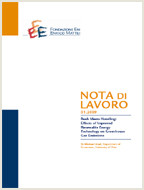Sovereign Wealth Funds: Form and Function in the 21st Century

13.10.2010
Gordon L. Clark, Ashby H. B. Monk
D02, F36, G15
Sovereign Wealth Funds, Crisis, Market Performance, Long-term Investment
Economy and Society
Fausto Panunzi
As representatives of nation-states in global financial markets, sovereign wealth funds (SWFs) share a common form and many functions. Arguably their form and functions owe as much to a shared (global) moment of institutional formation as they owe their form and functions to the hegemony of Anglo-American finance over the late 20th and early 21st centuries. We distinguish between the immediate future for SWFs in the aftermath of the global financial crisis, and two possible long-term scenarios; one of which sees SWFs becoming financial goliaths dominating global markets, while the other sees SWFs morphing into nation-state development institutions that intermediate between financial markets and the long-term commitments of the nation-state sponsors. If the former scenario dominates, global financial integration will accelerate with attendant costs and benefits. If the latter scenario dominates, SWFs are likely to differentiate and evolve, returning, perhaps, to their national traditions and their respective places in a world of contested power and influence. Here, we clarify the assumptions underpinning the conception and formation of sovereign wealth funds over the past twenty years or so in the face of the ‘new’ realities of global finance.
